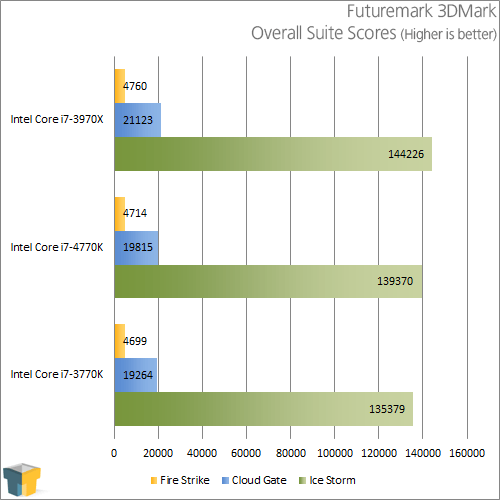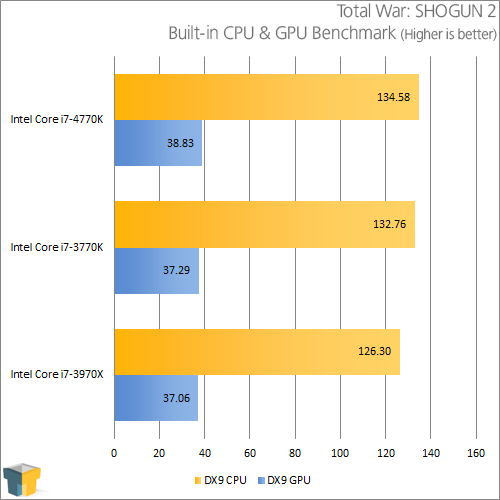- Qualcomm Launches Snapdragon 4 Gen 2 Mobile Platform
- AMD Launches Ryzen PRO 7000 Series Mobile & Desktop Platform
- Intel Launches Sleek Single-Slot Arc Pro A60 Workstation Graphics Card
- NVIDIA Announces Latest Ada Lovelace Additions: GeForce RTX 4060 Ti & RTX 4060
- Maxon Redshift With AMD Radeon GPU Rendering Support Now Available
Intel Core i7-4770K Quad-Core Processor Review

Intel’s latest processor architecture brings a lot to the table, with the usual suspects dominating the feature’s-list: improved CPU and GPU performance, better power-efficiency, and new instruction sets. We’re taking a look at the desktop line’s highest-end offering here, so let’s see how it stacks up against the last-gen’s champ.
Page 12 – Gaming: Futuremark 3DMark & Total War: SHOGUN 2
Game benchmarks stand to see the least amount of gain in comparison to our other tests, but they’re necessary for the sake of completeness. Also, while we benchmark hands-on for our graphics card content, we opt for synthetic testing here, as we’re utilizing the same GPU across each setup.
First up is the ever-popular 3DMark benchmark, and for the sake of completeness, we run all three tests (Ice Storm, Cloud Gate and Fire Strike).

Throughout most of our testing, Intel’s Core i7-3960X, despite having six cores, hasn’t outperformed the other CPUs as much as we would have thought. Apparently where gaming is concerned, or at least 3DMark, extra cores do make a difference, as evidenced here. Overall though, the differences are quite minimal, except in the DX9 Ice Storm test.
Total War: SHOGUN 2
Real-time and turn-based strategy games tend to be the most stressful on both the GPU and CPU, and Total War: SHOGUN 2 does well to live up to that stereotype. The game is so stressful on a PC, in fact, that the developers included built-in benchmarks that are meant to test a PC in a worst-case scenario sort of way. For our testing here, we use we use both the 720p GPU and CPU benchmarks.

When the CPU is singled-out, Intel’s Core i7-4770K leads the pack. GPU-wise, all of the CPUs might as well be considered the same.
Support our efforts! With ad revenue at an all-time low for written websites, we're relying more than ever on reader support to help us continue putting so much effort into this type of content. You can support us by becoming a Patron, or by using our Amazon shopping affiliate links listed through our articles. Thanks for your support!







